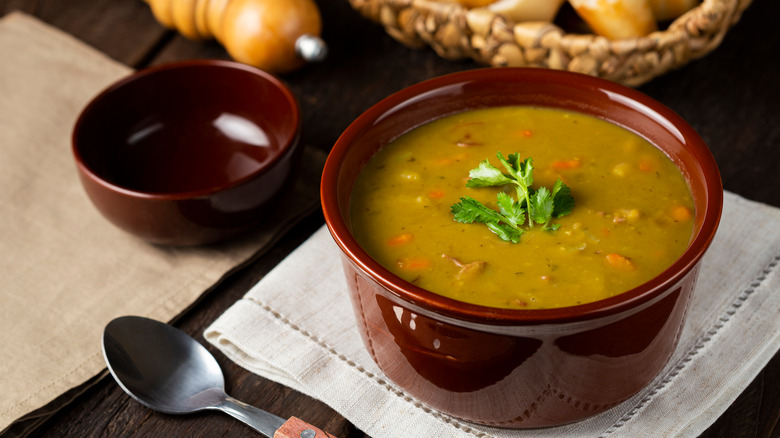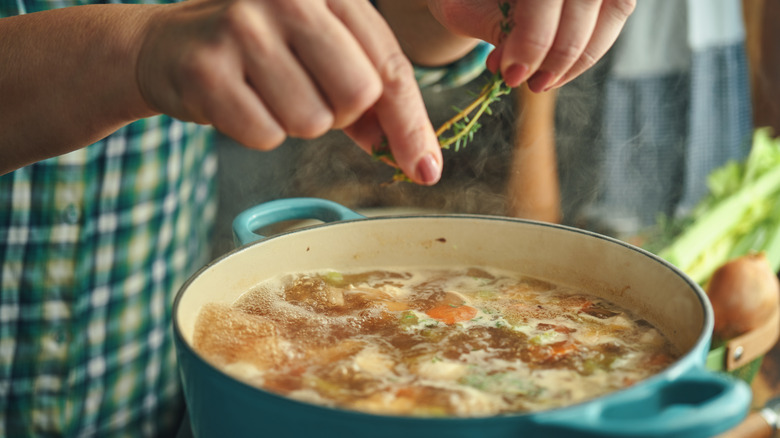The Absolute Best Way To Thaw And Reheat Frozen Soup
You'll never go wrong with making a double batch of soup. Even if you live solo, storing extra portions of this comfort dish guarantees that you can have a filling and nourishing meal anytime. Just dedicate a day to do the prep work and store it properly in the freezer. Making frozen leftover soup taste as good as the day it was cooked requires a little effort, though. Thawing and reheating it correctly will bring out its flavor and consistency to give you the cozy nourishment that soup is known for.
You can thaw frozen soup in two different ways. The first is by defrosting it in the refrigerator for six to eight hours. For quicker thawing, you can use the microwave. Transfer frozen soup into a microwave-safe container and set the machine to the defrost setting. Check after five minutes to see if the food is still solid. If it is, let it heat up for a couple more minutes. Otherwise, stir the soup to dissolve any remaining gelatinous portions.
If the microwave doesn't have a defrost setting, set it to medium power for one minute. After 60 seconds, stir the soup to help distribute the heat more evenly then let it thaw again for one minute. Repeat the process until the liquid reaches your desired consistency. Remember to thaw only the amount of soup you're planning to eat. Defrosting and reheating frozen soup more than once will degrade its quality and raise the risk of harmful bacteria growth.
Different kinds of soup require different reheating methods
Once the food is thawed, your next steps will be based on the kind of soup you have. If it's a broth, let it boil for three minutes. If you've made thick soup, the process isn't as simple. Boiling creamy soup will reduce it to a thicker and saltier consistency. Plus, if it's dairy-based, heat will cause the dairy to separate, leaving you with a grainy liquid. For this kind of soup, foresight is needed. Since milk or cream is usually added to the dish near the end of the cooking process, leave them off when preparing a big pot. Instead, stir them in once you're nearly done reheating frozen soup.
Warming up cream-based soup on the stovetop is ideal since you can control the temperature. Transfer it into a pan and set the stove to low heat, stirring the soup occasionally. Once steam rises to its surface, that means it has been heated sufficiently. Stir in the milk, cream, or cheese then take the soup off the stove.
Soups with solid components like noodle or wonton soup must be stored properly so they don't turn mushy. Freeze the broth separately from the noodles, wontons, grains, and vegetables. To reheat it after thawing, let it boil for three minutes before adding the other ingredients. Use fresh veggies and freshly cooked noodles or grains, too, for better flavors and textures. Keep everything cooking for 15 to 30 seconds before serving the reheated soup.

